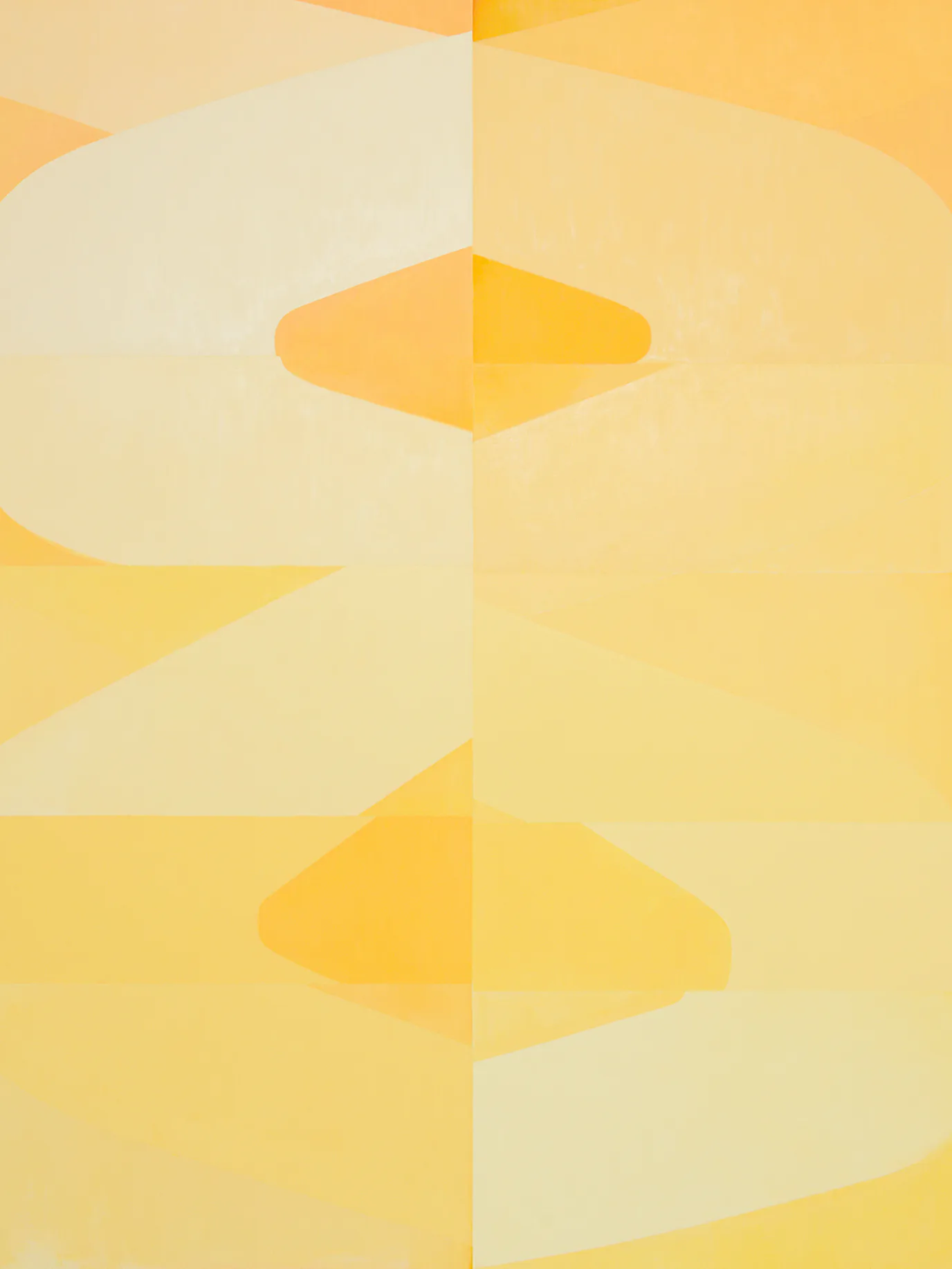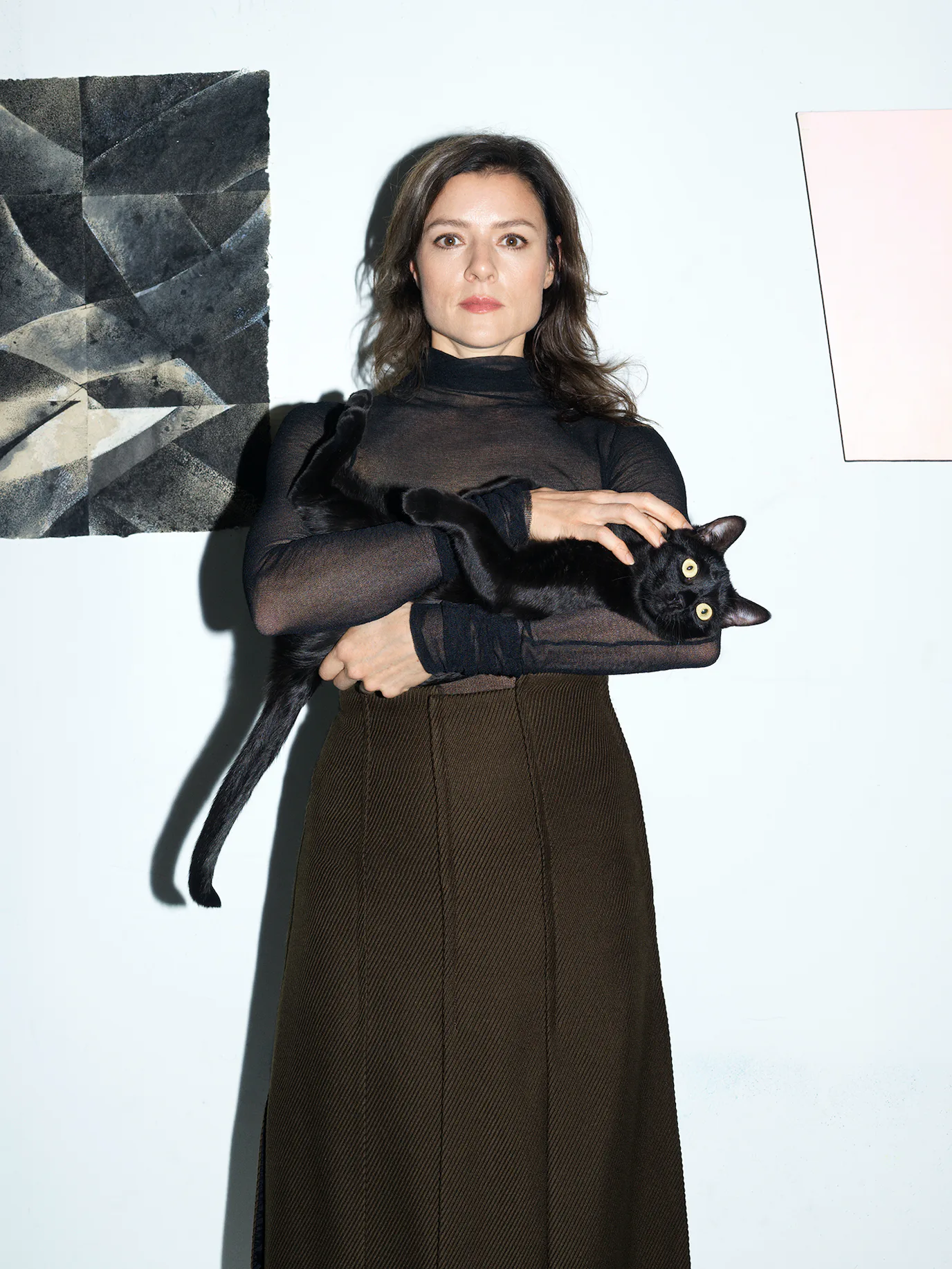Painting Outside the Lines

Contemporary female artists are approaching abstraction with an eye toward the inner world.
Written by Julia Halperin
You may have seen the photo before. It captures a group of 14 men and one woman clustered together in a sparse room, staring straight at the camera with scowls of varying intensity. The painter Jackson Pollock is perched on a stool in a suit and tie, holding a cigarette. Barnett Newman, seated in the front with his legs crossed, had insisted they all dress “like bankers.” This is the famous portrait of “the Irascibles,” which appeared in Life magazine in 1951. The artists pictured—including Willem de Kooning, Robert Motherwell, and Mark Rothko—would go on to be regarded as pioneers of Abstract Expressionism, a style prized for exuberant, seemingly spontaneous brushstrokes that revolutionized the art world.
For Hedda Sterne, the lone female artist in the group, the shoot was not particularly welcoming. “They were sufficiently macho to think that the presence of a woman took away from the seriousness of it all,” she later recalled. If a similar portrait was staged today, it would look quite different. For one, the artists would not all be white. Nor would they be exclusively from New York. And many would be female. Women and artists of color have been working in abstraction for as long as anyone else—they just haven’t historically been recognized by the establishment.
That’s why the new generation of female abstract artists is not discussing who can make abstract painting—Hilma af Klint began creating abstractions in the early 20th century, years before the men who got the credit. Nor are they making art explicitly about their identities as women and people of color. Instead, they are redefining what abstraction can be. The age of the Irascibles was all about the mind—minds so powerful they could create paintings that referenced nothing but themselves. That kind of solipsism is not particularly interesting now. Artists such as Rachel Jones, A’Driane Nieves, Li Hei Di, and Grace Carney see abstract painting as a place to express the power of not only the mind but also the body, spirit, and subconscious. Nathlie Provosty deploys shiny surfaces that literally reflect the viewer; Pam Evelyn assembles brushstrokes that recall the expansiveness of the seaside; and Tala Worrell incorporates in her canvases nigella seeds, sumac, and coffee grounds that evoke the textures, smells, and feelings associated with making a home. All these tactics serve to invite others into their paintings, rather than pushing them out.
Nathlie Provosty, who was born in Ohio and is now based in Brooklyn, came to abstraction after what she described as “seven years of heavy-duty flailing, also known as exploring,” following her graduation from the Maryland Institute College of Art, in Baltimore. She tried collage, photography, sculpture, and video, but nothing felt right. In 2010, she experienced a breakthrough when she started doing automatic drawing, a practice popularized by Surrealist artists such as Salvador Dalí that involves making marks on a blank sheet of paper continuously, without a plan, to tap into the subconscious. The abstract shapes she created ended up in paintings of not-quite-symmetrical geometric forms in hues of marigold, blood red, and seafoam green. They are made with paint that is manipulated to appear matte in some places and glossy in others; unlike the hermetically sealed abstractions of the Irascibles, they intentionally bring in the viewer’s reflection. “They are very promiscuous paintings,” Provosty says.
Provosty, who will have a solo show at Miami’s Nina Johnson gallery in February, recognizes that the mainstream history of painting remains male-dominated. “We come out of a space of really subtle, internalized self-loathing as women artists,” she says. “There is a space for abstract painters who are women to undo, redo, and remake.” Provosty and her peers are not responding to this history in a literal way; they are not painting women back into the picture. Instead, they are wielding the tools of abstraction to challenge us to look more carefully and critically—at art, at history, and at everything around us.
Read the full article on W Magazine.
